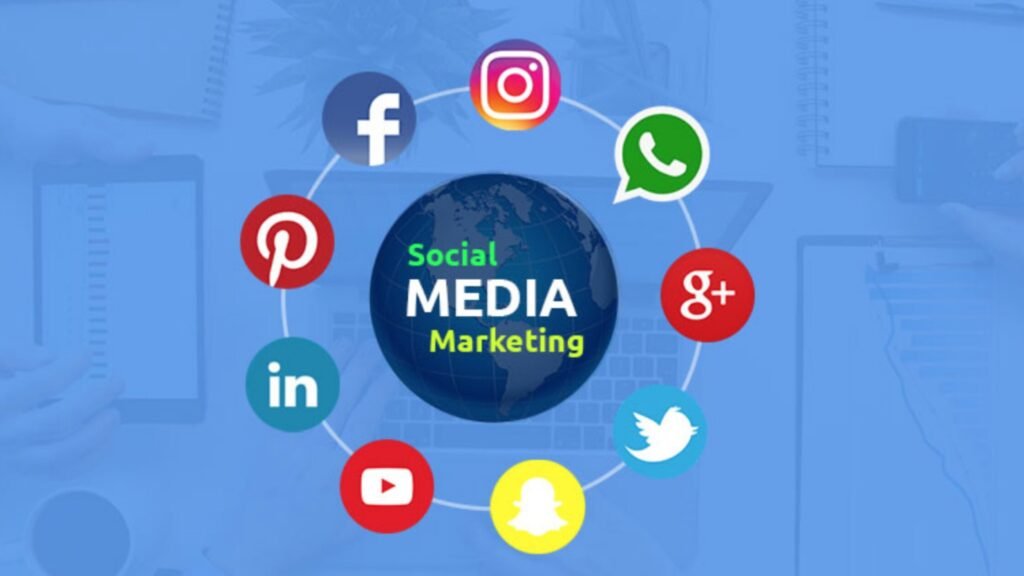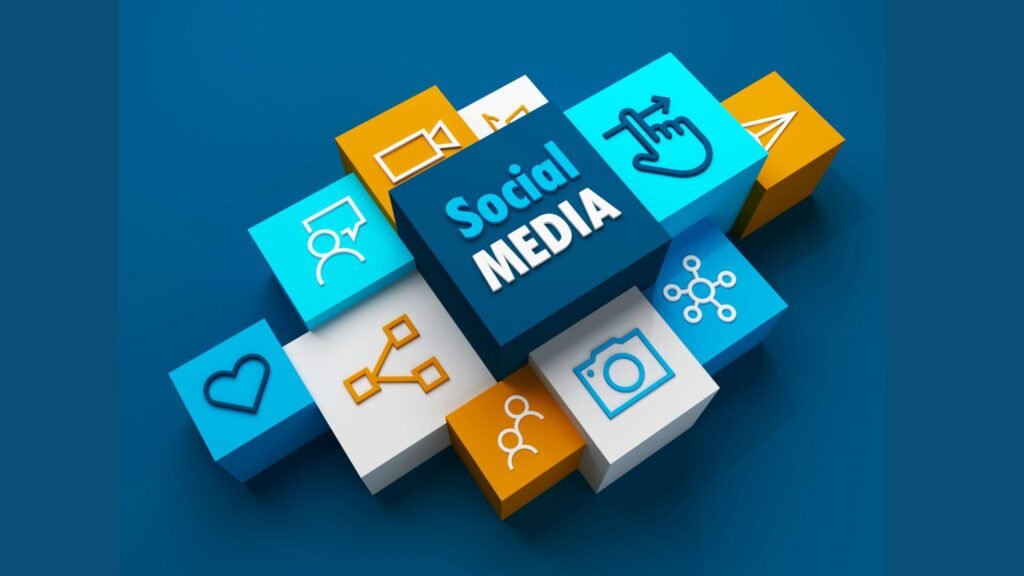Social Media Marketing Services for Institutes in Janakpuri: Social media is an indispensable tool for educational institutions. It facilitates connections between schools, colleges, universities, and their audiences in ways that were previously unimaginable. Social media’s importance lies in its ability to bridge the gap between the institution and its students, parents, alumni, and potential enrollees.
- Read more: Reels Creation Services in Janakpuri
Platforms like Facebook, Instagram, Twitter, and LinkedIn enable educational institutions to share updates, celebrate achievements, and communicate essential information. This connectivity fosters a stronger sense of community and belonging among all stakeholders. Additionally, social media’s interactive nature encourages engagement, allowing institutions to receive feedback and respond promptly. By actively participating in social media, educational institutions can enhance their visibility, improve communication, and build a reputable online presence. This, in turn, attracts prospective students and faculty, showcasing the institution’s vibrant and dynamic environment. In essence, social media is not just a marketing tool; it is a vital communication channel that helps educational institutions stay relevant and connected in a rapidly changing digital world.
Benefits of Social Media Marketing for Institutes

Increased Engagement
One of the most significant benefits of social media marketing for educational institutions is increased engagement. Engaging content, such as updates on school events, academic achievements, and interactive posts, can capture the interest of students, parents, and alumni. When stakeholders interact with the content by liking, sharing, or commenting, it creates a vibrant online community. This sense of community strengthens the bond between the institution and its audience. Additionally, increased engagement means more people are seeing and interacting with the institution’s posts, leading to greater visibility. This visibility can attract new students and faculty members, further expanding the institution’s reach. Moreover, interactive engagement allows institutions to gather valuable feedback, which can be used to improve services and address concerns promptly. In summary, increased engagement through social media helps educational institutions build strong relationships, enhance visibility, and foster a supportive and active community.
Enhanced Visibility
Enhanced visibility is a crucial advantage of using social media for educational institutions. By maintaining an active and engaging presence on platforms like Facebook, Instagram, and Twitter, institutions can reach a wider audience. This broader reach includes not only current students and parents but also potential students, faculty, and even industry partners. When an institution shares high-quality content, it can quickly gain attention and recognition. This visibility is essential for attracting new enrollees and establishing a strong brand identity. Furthermore, social media allows for targeted advertising, enabling institutions to reach specific demographics that are most likely to be interested in their programs. Enhanced visibility also means that positive news and achievements are more likely to be seen and shared, further boosting the institution’s reputation. Overall, enhanced visibility through social media helps educational institutions to grow their audience, attract top talent, and build a strong, recognizable brand.
Improved Communication
Improved communication is a vital benefit that social media marketing brings to educational institutions. Social media platforms like Facebook, Twitter, and Instagram provide direct channels of communication between the institution and its stakeholders. This direct line of communication ensures that information is disseminated quickly and efficiently. Whether it’s an announcement about a school event, a change in the academic calendar, or an emergency notification, social media allows institutions to reach their audience in real time. Improved communication also means better engagement with students, parents, and alumni. Social media enables institutions to listen to their community’s concerns, answer questions, and provide support promptly. This two-way communication fosters transparency and trust, which are essential for building a strong, supportive community. Furthermore, social media can be used to gather feedback through polls and surveys, helping institutions understand their audience’s needs and preferences better. In summary, improved communication through social media ensures that educational institutions stay connected with their community, enhance transparency, and respond quickly to any issues or concerns.
Key Strategies for Effective Social Media Marketing
Content Creation and Curation
Content creation and curation are fundamental strategies for effective social media marketing services for institutes. Creating high-quality, engaging content is essential to capture the attention of students, parents, and alumni. This content can include informative articles, success stories, student testimonials, and updates on school events. It’s important to tailor the content to the interests and needs of the audience to ensure it resonates and engages them. Curation involves sharing relevant content from reputable sources that add value to the institution’s social media pages. This could be articles about educational trends, research findings, or inspirational stories that align with the institution’s values. By balancing original content creation with curated content, institutions can provide a rich and varied social media experience. This strategy not only keeps the audience engaged but also positions the institution as a thought leader in the educational sector. In essence, content creation and curation are key to building a strong, engaging, and informative social media presence.
Visual Content
Visual content plays a pivotal role in the success of social media marketing services for institutes. Images, videos, and infographics are highly engaging and often perform better than text-only posts. Visual content can include photos of campus life, events, student activities, and academic achievements. Videos showcasing campus tours, interviews with faculty, and student testimonials can be particularly impactful. Visual storytelling helps to convey the institution’s culture, values, and vibrancy in a way that words alone cannot. It captures the audience’s attention and encourages them to interact with the content. Additionally, platforms like Instagram and Snapchat, which are highly visual, provide excellent opportunities for institutions to showcase their unique aspects and daily activities. High-quality visual content not only engages but also leaves a lasting impression, making it an essential component of any effective social media strategy for educational institutions.
Regular Updates
Regular updates are crucial for maintaining an active and engaging social media presence for educational institutions. Consistency in posting ensures that the audience stays informed and engaged with the institution’s activities. Regular updates can include announcements about upcoming events, highlights of recent achievements, and important news. A content calendar can be a valuable tool in planning and scheduling these posts, ensuring that there is a steady flow of information. Regular updates also help to keep the institution top-of-mind for its audience, making it more likely that they will engage with the content. Moreover, frequent updates signal to the audience that the institution is active and involved, which can enhance its reputation and credibility. In summary, regular updates are essential for keeping the audience engaged, informed, and connected with the institution’s ongoing activities and achievements.
Utilizing Social Media Platforms
Facebook is a versatile platform that offers numerous benefits for educational institutions. It is ideal for sharing detailed updates, engaging with a broad audience, and creating event pages. Institutions can post a variety of content, including photos, videos, articles, and announcements. Facebook’s interactive features, such as comments, likes, and shares, allow for direct engagement with the audience. Additionally, Facebook Ads provide a powerful tool for targeting specific demographics, enabling institutions to reach potential students and parents effectively. By creating event pages, institutions can promote and manage events, providing a centralized location for information and RSVPs. In essence, Facebook is a comprehensive platform that can help educational institutions enhance their visibility, engagement, and communication with their community.
Instagram is a powerful platform for visual storytelling, making it ideal for educational institutions. By sharing high-quality images and short videos, institutions can showcase their campus life, events, and student achievements. Instagram Stories and Reels offer dynamic ways to highlight daily activities, special events, and behind-the-scenes glimpses of campus life. Engaging with followers through comments and direct messages helps to build a strong, interactive community. Instagram’s visual nature captures the audience’s attention and encourages them to explore more about the institution. It is particularly effective in reaching younger demographics, making it a valuable tool for attracting prospective students. Overall, Instagram provides a visually engaging platform for educational institutions to share their unique stories and connect with their audience.
Twitter is an excellent platform for quick updates and real-time communication for educational institutions. It allows institutions to share short, concise messages, links to articles, announcements, and live event coverage. The use of hashtags can increase the visibility of posts and allow institutions to participate in trending conversations relevant to education. Twitter’s real-time nature makes it perfect for sharing timely information and engaging in immediate dialogue with the audience. Institutions can use Twitter to keep their community informed about news, events, and important updates. Additionally, by following and interacting with industry leaders, other educational institutions, and relevant organizations, institutions can enhance their network and visibility. In summary, Twitter is a valuable platform for quick, real-time communication and engagement for educational institutions.
LinkedIn is a professional network that is particularly beneficial for educational institutions. It is ideal for connecting with alumni, industry partners, and potential faculty members. Institutions can share academic achievements, faculty publications, and career opportunities on their LinkedIn page. This platform allows institutions to showcase their academic excellence and professional achievements, enhancing their reputation within the educational and professional communities. LinkedIn also provides opportunities for networking, enabling institutions to build relationships with industry leaders and other educational organizations. By maintaining an active presence on LinkedIn, institutions can attract top talent, foster professional connections, and enhance their overall visibility and credibility. In essence, LinkedIn is a powerful tool for educational institutions to connect, network, and showcase their professional accomplishments.
Measuring Success in Social Media Marketing
Analytics Tools
Analytics tools are essential for measuring the success of social media marketing services for institutes. These tools provide insights into various metrics such as engagement, reach, follower growth, and more. By analyzing these metrics, institutions can understand which types of content perform best and identify areas for improvement. Tools like Google Analytics, Facebook Insights, and Twitter Analytics offer detailed reports that help institutions track their social media performance. This data-driven approach allows institutions to make informed decisions and optimize their social media strategies for better results. In summary, using analytics tools is crucial for understanding the effectiveness of social media marketing and ensuring continuous improvement.
Feedback and Surveys
Gathering feedback through social media surveys is an effective way for educational institutions to understand their audience’s needs and preferences. By creating and sharing surveys on platforms like Facebook and Twitter, institutions can collect valuable insights from students, parents, and alumni. This feedback helps institutions refine their social media strategies, ensuring that they are meeting their audience’s expectations. Additionally, listening to the community’s opinions and addressing their concerns fosters a sense of trust and transparency. In essence, feedback and surveys are crucial for enhancing the effectiveness of social media marketing services for institutes and building a supportive, engaged community.

